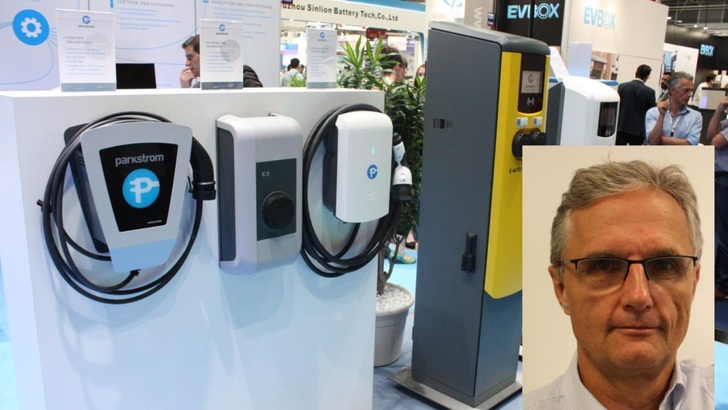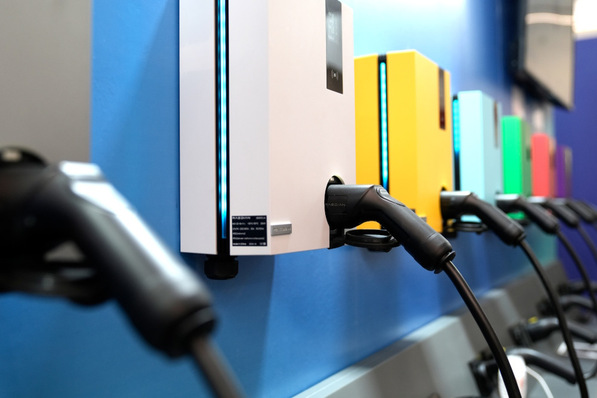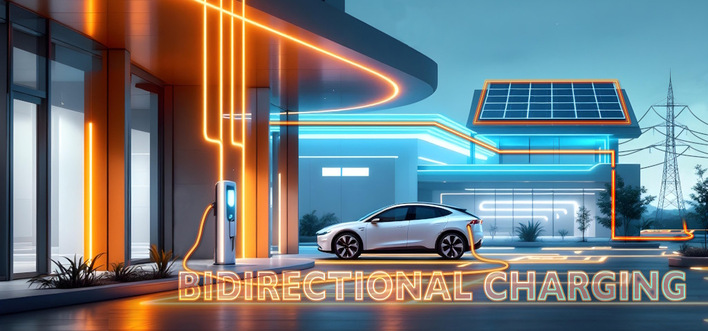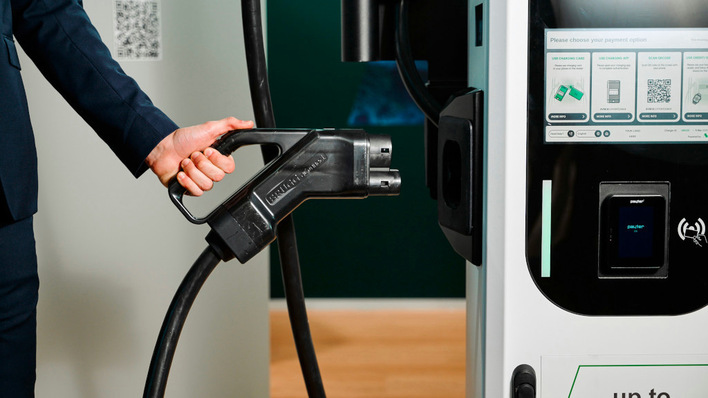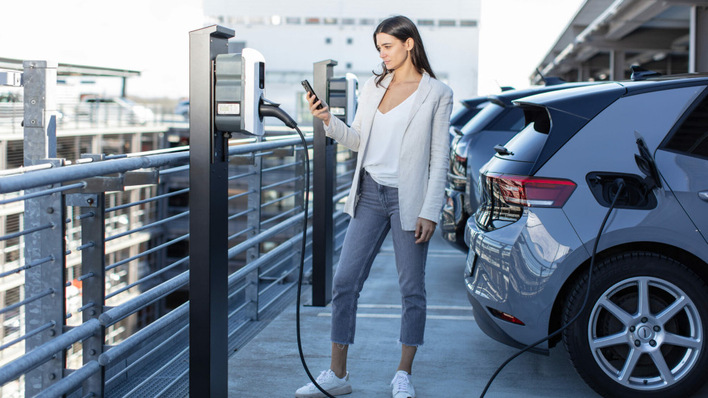Electric mobility is slowly gathering momentum. But the devil is in the detail. What obstacles will the industry have to overcome in order to flourish?
Andreas Zumschlinge: For this market to develop, the manufacturers of chargers will, for instance, have to comply with the calibration and metrology standards. The calibration standards were amended in 2015. Since then, the National Metrology Institute in Braunschweig has laid down the requirements that wall boxes and charging stations have to meet.
What exactly are we talking about?
We are talking about transparent and correct billing of the amount of kilowatt hours that the owner of an EV charges. If you use a wall box at home or your company uses their chargers exclusively for internal use for their customers or employees, then there is no problem. However, if you want to sell the electricity, that is where calibration and metrology regulations come into the picture.
We are already familiar with this problem from electricity metres or smart metres that register power for PV as well as batteries. A very delicate issue that should not be underestimated…
Definitely not. Because if the billing for the amount of kilowatt hours charged is not accurate and transparent, the risk is that electric mobility may quickly lose the trust invested in it. This will inevitably lead to conflicts, even if it is only a few euros here and there. That can have very adverse effects on e-mobility, which, however, is urgently needed to mitigate the drastic impact that fossil-fuel-based transport is having.
Should metres in charging stations be calibrated, as is the case in electricity metres?
Exactly. The MID metres in AC chargers and the metres in DC charging stations have to be calibrated. But that is not enough. Germany has specific calibration and metrology regulations: It has to be impossible to retroactively – i.e. for billing – tamper with the data on the amount of charged electricity and the price per kilowatt hour. In other words: The EV owner has to be able to legally claim potential manipulations. The manufacturers of charging systems either did not pay attention to or understand the German calibration and metrology regulations. Now they are upgrading their products.
Are there already certified systems?
For example, EBG Compleo’s chargers were given a certificate by the PTB. The certification of other companies such as Alfen are expected in the coming weeks. We actually have these products in our portfolio. Now nothing stands in the way of further investments in charging infrastructure.
Was the lack of compliance with the calibration regulations the reason why investors have been reluctant to invest?
Some of the companies that we advise on changing their fleets to EVs or on electrifying their customer parking are very large. Those that have installed the older chargers and only use them for internal purposes, i.e. for charging the company’s vehicles, has no problems. Until 2020, companies can also provide free charging to their employees without them having to file it as an in-kind benefit in their tax return.
Under what circumstances are calibrated metres mandatory?
If you want to use chargers to sell electricity, for instance as part of an innovative business model, and you want to bill by the kilowatt hour or based on time, these strictly have to comply with calibration regulations. Otherwise, they are both unsuitable and not approved for recording charged amounts and may be forcibly shut down by the metrological authorities.
How do you advise your customers?
Regarding this issue, we put together concepts and extensive advice for our corporate customers. We repeatedly point out that there is little sense in installing non-compliant charging stations – even if they are only intended for internal use for now. After all, they might choose to use them to sell electricity later on. I expect that any charger, either public or semi-public, will sooner or later be set up with a modern billing system. To be able to sell electricity it is necessary to entirely replace any old charger with a compliant one – unless it can be retrofitted at a reasonable expense.
Why?
Drivers of EVs are absolutely taking it for granted to be able to charge a few kilowatt hours here and there once in a while – if the price is right. The general assumption is that about 80 percent of charging will happen at home or at work, i.e. during times when the car is parked for a long time. For the rest of the time it is most interesting to cheaply get a few kilowatt hours rather than fully charge the battery.
Who will be involved in this business?
This will happen where ever there are parking spaces that are accessible by the public: supermarkets, child care centres, even churches. Charge points for selling a electricity will crop up everywhere. Many companies will open their parking spaces and staff and customer chargers to the public in order to make money from the sale of electricity.
This involves a massive effort in terms of billing…
Correct. It will mean a great number of transactions per year that all have to be handled correctly and verifiably. Even if the money involved may be very small amounts – or maybe even because that is so. But that can be taken care of almost automatically through the back end.
Are you seeing a trend towards standardisation when it comes to access cards?
The great diversity of access cards that are still around today will disappear. To me, a promising model is the payment by NFC debit card. In Germany alone, more than 17 million such cards have been issued. Once all of the old debit cards have been replaced with new ones, there should be about 70 million.
A common payment card that can also be used for charging. Would that not be an appealing solution?
The advantage of Giro-e is in the high degree of ubiquity of debit cards. Also, this method is very simple and transparent to all: the payment service providers, the banks involved and the customers. That keeps the transaction costs for the charging process very low, and would, for example, allow the operators of charge points to better market their solar electricity.
When it comes to charging, the price at the charge point will make all the difference, also and above all for EVs. Most people will charge occasionally because the electricity happens to cost less in certain places – such as the supermarket or at church – than at a car park or from other providers…
Correct. And anyone with a smart charger or wall box can – if it complies with calibration and metrology regulations – recoup some of their investment through the sale of electricity. Or, depending on the location and the number of parking bays suitable for charging, the sale of electricity for charging can become its own business model. Many companies have already realised that they will have to provide charging for their employees and customers. Also, charging is increasingly becoming an important factor when it comes to the value of residential and commercial properties. And if you can actually provide solar power, things really get interesting.
You were saying that Parkstrom develops concepts and advises companies on e-mobility. Who are the manufacturers of the systems? Who maintains them?
The installation is done by us in cooperation with competent partners among installing companies. The technical service is also covered by our partners who are also able to ensure quick response times. Another matter entirely is setting up a system for billing. This is a service that we provide ourselves. Depending on the size and requirements of the customer, this can become very complex and time-consuming – and offering it as their own service is often not economically feasible for companies.
Do you manufacture your own charging hardware?
We are the sales partner of various manufacturers, i.e. resellers in a way. But that makes us independent of any manufacturer, which we see as a benefit for our customers: According to our customers’ needs, we individually select the most suitable charging system. We also cooperate closely with the manufacturers and feed our know-how and the requirements back into their developments. (HS)
Stay informed, get our newsletter twice a week.
Register here: https://www.pveurope.eu/Newsletter
Read more about solar modules.
Read more about solar mounting systems.
Read more about solar energy storage.


